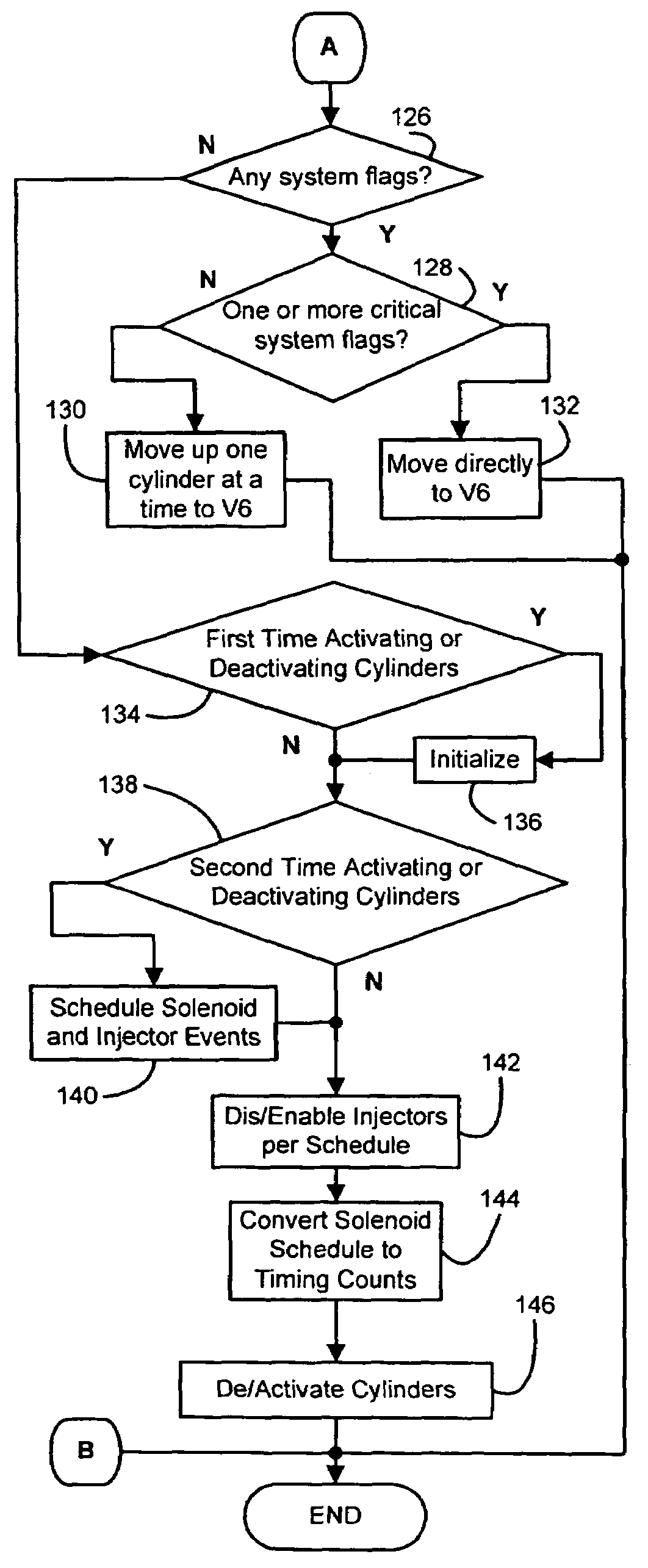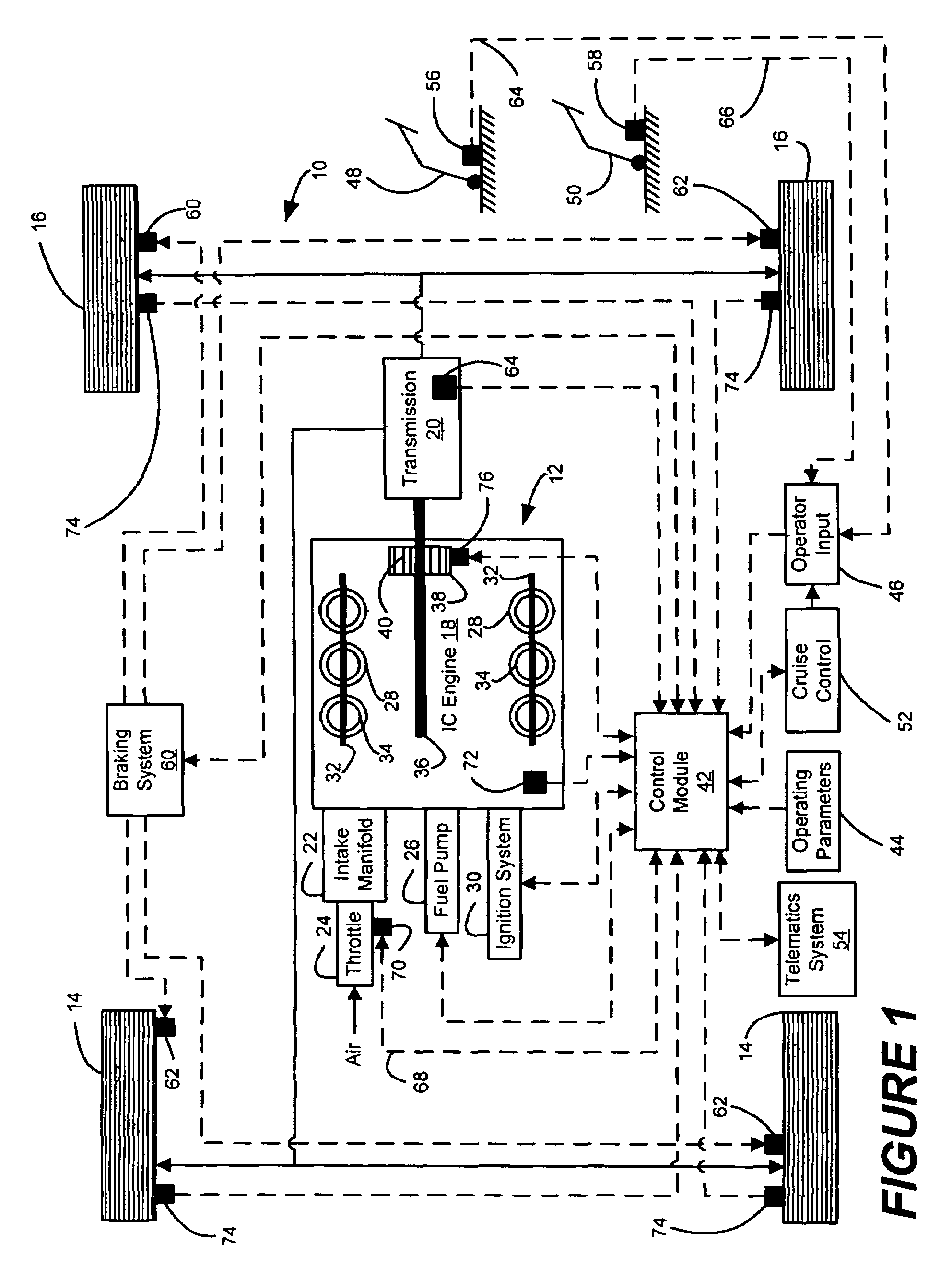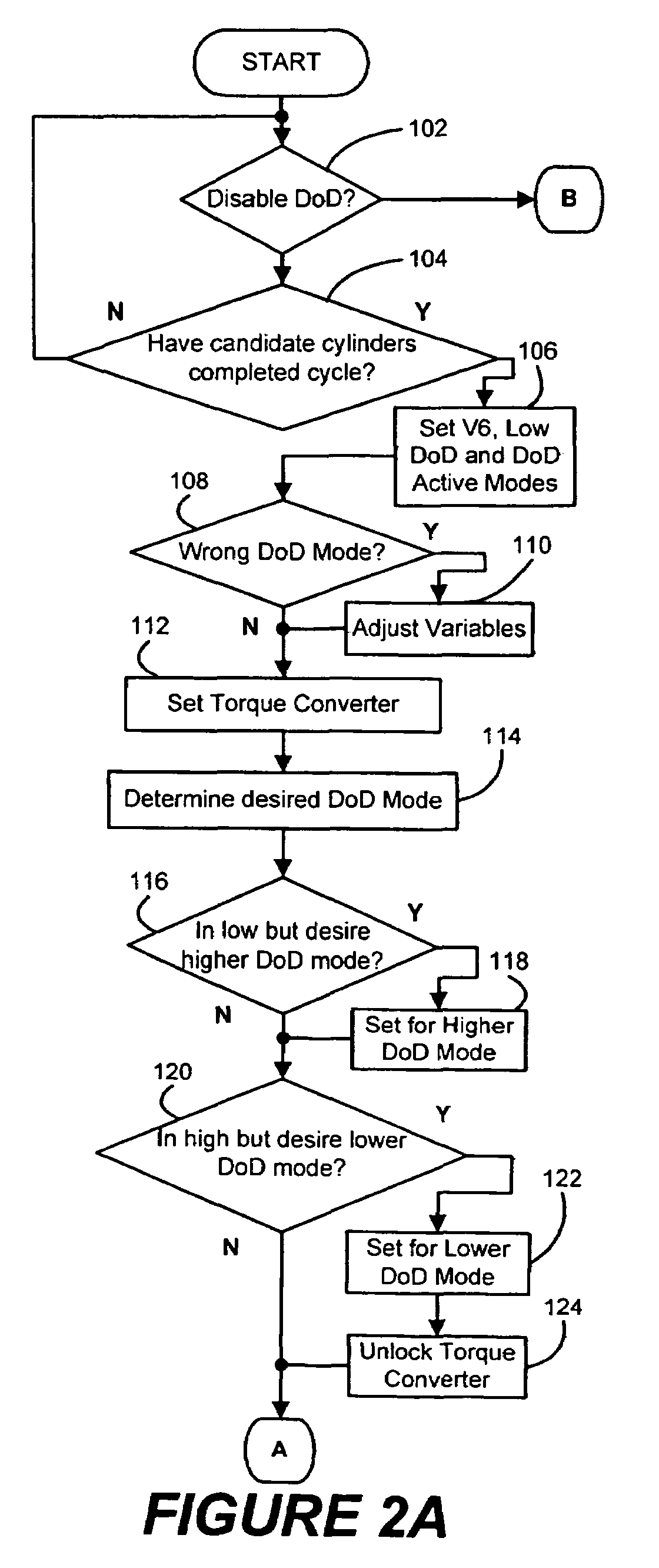Variable incremental activation and deactivation of cylinders in a displacement on demand engine
a technology of displacement on demand and incremental activation, which is applied in the direction of electric control, combustion engines, machines/engines, etc., can solve the problems of less drive torque available to drive the vehicle driveline and accessories, increase noise, vibration and harshness in the engine, increase noise, vibration and harshness, etc., and achieve the effect of reducing vibration
- Summary
- Abstract
- Description
- Claims
- Application Information
AI Technical Summary
Benefits of technology
Problems solved by technology
Method used
Image
Examples
Embodiment Construction
[0013]The following description of the various embodiments is merely exemplary in nature and is in no way intended to limit the invention, its application or uses. As used herein, the term module, submodule, control module and / or device refers to an application specific integrated circuit (ASIC), an electronic circuit, a processor (shared, dedicated, or group) and memory that executes one or more software or firmware programs, a combinational logic circuit, or other suitable components that provide the described functionality. Moreover, vehicle controllers may communicate with various vehicle systems using digital or analog inputs and outputs and / or an automotive communications network including, but not limited to, the following commonly used vehicle communications network standards: CAN, SAE J1850, and GMLAN.
[0014]Referring now to FIG. 1, a vehicle 10 includes an engine system 12, driven wheels 14 and optionally-driven wheels 16. The engine system 12 produces a torque output to dr...
PUM
 Login to View More
Login to View More Abstract
Description
Claims
Application Information
 Login to View More
Login to View More - R&D
- Intellectual Property
- Life Sciences
- Materials
- Tech Scout
- Unparalleled Data Quality
- Higher Quality Content
- 60% Fewer Hallucinations
Browse by: Latest US Patents, China's latest patents, Technical Efficacy Thesaurus, Application Domain, Technology Topic, Popular Technical Reports.
© 2025 PatSnap. All rights reserved.Legal|Privacy policy|Modern Slavery Act Transparency Statement|Sitemap|About US| Contact US: help@patsnap.com



